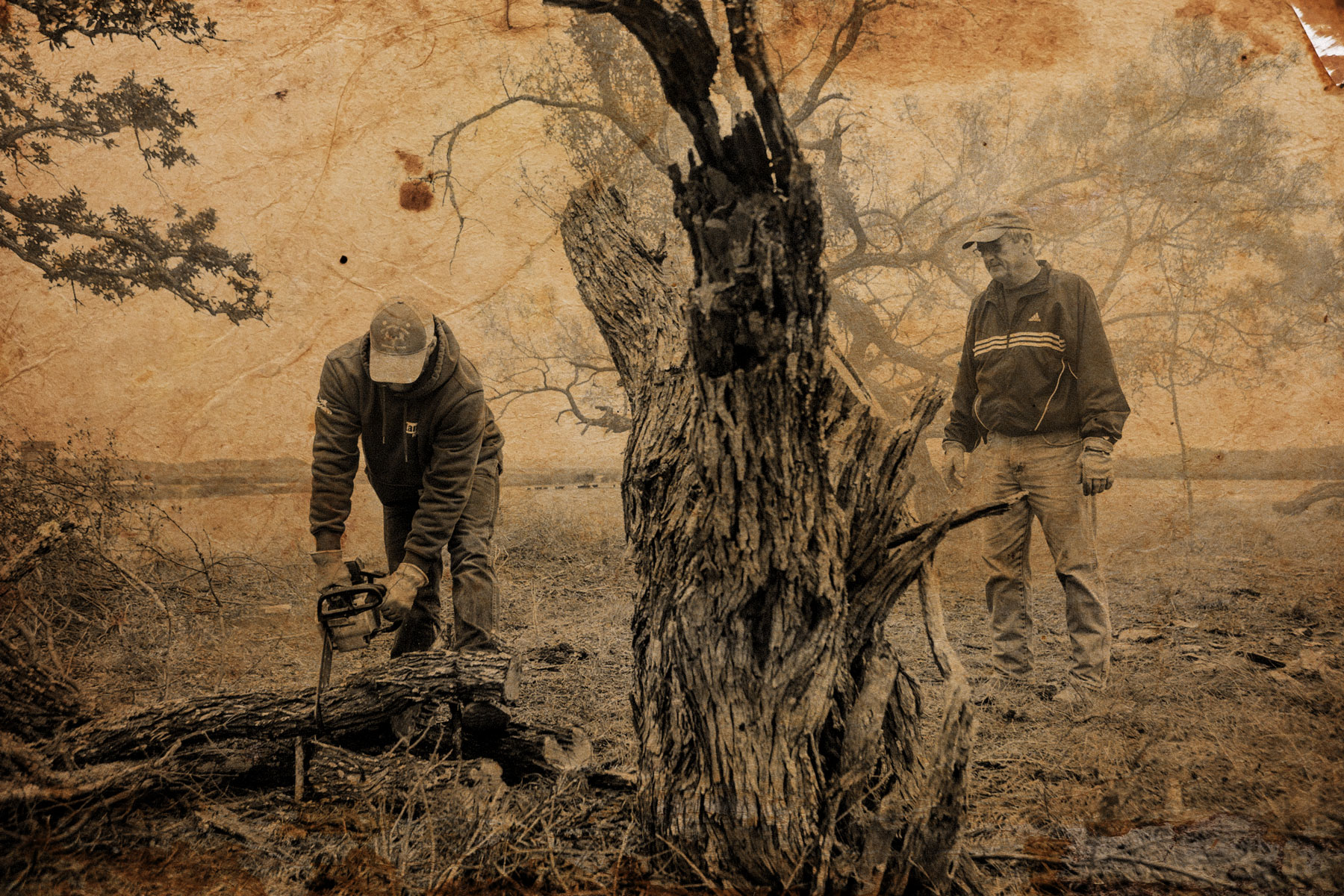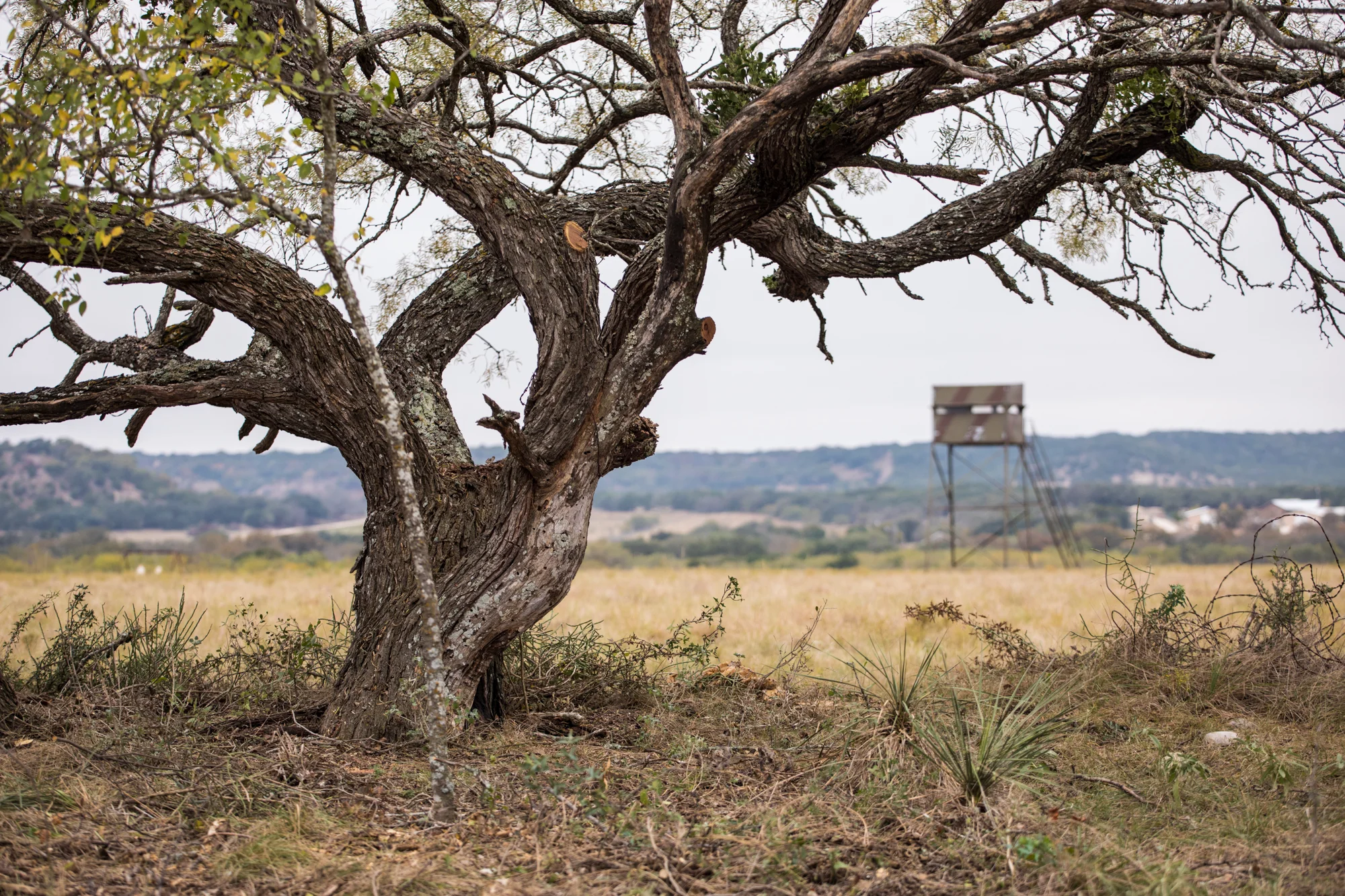Cross Creek Ranch
Nestled in the Texas Hill Country, Cross Creek Ranch encompasses over 1500 acres
of native Texas magnificence. While it is a true Texas working ranch, with cattle and farming operations, a portion of the ranch is allocated to hunting and sportsmanship activities.

RESTORATION
Most of the ranch had been exposed to some form of invasive species and required significant clearing for both usability and environmental impact. Through assistance from the State of Texas, the ranch has been restored to its native condition.
Preservation and restoration are the two leading focal points of the revitalization. The ranch is committed to creating a native Texas landscape, and over the course of several seasons planting specialized native seed mix, significant improvements in the restoration is now visible.
When the restoration process commenced, the ranch addressed the areas throughout the landscape that were overgrown with cedar, removing enough cedar to allow the other native plants to thrive. Generally perceived as a nuisance in the Texas ecology, cedar has a tendency to kill off all other plants that are trying to grow. It requires a significant water supply and thus takes away from all other surrounding vegetation. Not to mention it serves as one of the major allergens to affect allergy sufferers, often called cedar fever.
Unfortunately, a significant amount of the ranch’s oak tree population had been exposed to oak wilt and had become damaged and destroyed by this disease. By removing the affected trees, the healthy trees were allowed to flourish. Over the course of several seasons, native seed mix was planted providing significant improvements in the restoration of the land.
NATURAL BEAUTY
Pecan trees, a variety of oak and mesquite trees, prickly pear cactus, as well as an abundant variation of wildflowers blanket the sprawling ranch. Various types of brush, grasses, and open stands of live oak, Ashe juniper, and some mesquite are also visible throughout the property.
The ranch is covered with wild turkey, armadillo and Texas horned lizard. Whitetail deer and birds including spotted towhee, painted bunting, white-crowned sparrow, summer tanager, hummingbird, chickadee, kinglet, goldfinch, warbler, finch and lark sparrow are year-round residents on the 1500 acres. Visit the WILDLIFE GALLERY
MORMON CREEK
Mormon Creek meanders throughout the ranch and is intermittent in its upper reaches and the stream follows a generally northerly course for ten miles to its mouth on Threadgill Creek. It rises in limestone hills on the eastern edge of the Edwards Plateau and crosses into part of the Llano Basin, an area characterized by flat to rolling terrain and soils include stony clays, loams, and clay loams.
Along with its majestic beauty, Mormon Creek also provides a crucial fresh water supply to the ranch, and provides a natural habitat for bass, catfish, perch, and other native fish. While recreational fishing is encouraged on the ranch, there is also a strict catch and release policy.
RANCH MANAGEMENT & OPERATIONS
Michael Porter manages the overall ranch operations while Ranch Foreman Sidney Scott and Randy Beakly oversee the cattle, farming, hunting and wildlife management operations.
The ranch perimeter is lined with cross fencing securing the Brangus cattle stock that is raised onsite. Coastal grass and kliengrass are farmed on over 150 acres of the ranch, both of which are drought- and pest-resistant.

The Blue Lacy
In true keeping with true Texas ranch fashion, Cross Creek Ranch is proud to work the official State Dog Breed of Texas, the Blue Lacy. These handsome creatures serve as both hunting and herding dogs that display both drive and determination to work with big game and control difficult livestock.
Hunting & Marksmanship
Cross Creek Ranch has allocated 700 acres for the private hunting of deer, dove and coyote. Feeders and protein hoppers are filled year-round by the ranch staff.
The ranch also boasts a state-of-the-art rifle range that features three covered shooting positions with reactive ballistic steel targets from 100 yards to a mile. The pistol range is an open range featuring reactive steel, hostage and moving type targets and doubles as a close-quarter AR range.
Entertainment
The sprawling 1500-acre ranch plays home to a 2100 square-foot pavilion and cooking facility that is used for entertaining ranch visitors.
WOUNDED WARRIORS
Cross Creek Ranch is proud to host an annual Wounded Warrior event, sponsored by the Combat Marine Outdoors Group from Waco, Texas. The 3-day retreat began in 2012 as an opportunity for Wounded Warriors to gather and hunt, fish, BBQ and utilize the shooting ranges. The event continues to grow and attract more veterans each year and the ranch is proud to honor these servicemen and their sacrifices and dedication to protecting our Country.
This event would not be successful without the endless hours and hard work by Michael T. Porter, Adam Roe, Tony Baca, Riley Porter, Sidney Scott, Randy Beakly and Sue Porter.











